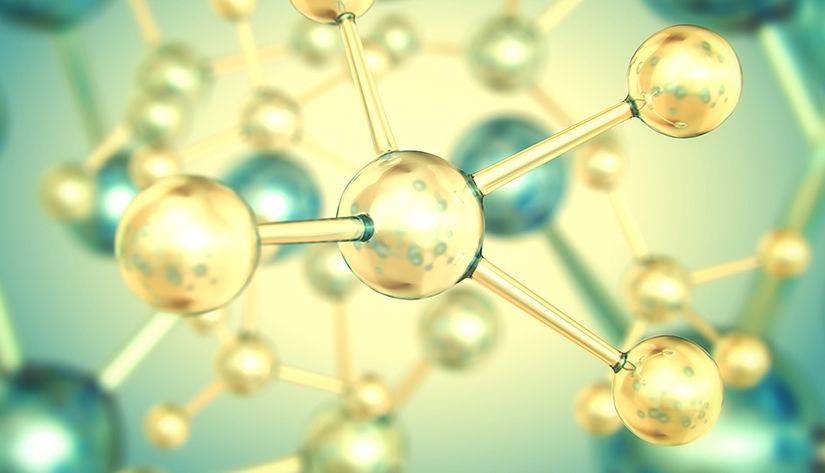
Green chemistry, our hopes for a cleaner and more efficient world
Chemistry is omnipresent in our daily lives. Toothpaste, plastics and sun creams are all made using chemical processes. However, their production and consumption – which are revolutionary in many respects – can have a rather heavy impact on our environment. Hence the emergence of green chemistry.
Do we really need chemistry ?
Nowadays, the chemical industry is involved in at least one stage of the processes used to manufacture most of the products we use or consume.
But modern chemistry only really took off in the 19th century. Isn’t that proof that we can live without this knowledge? And then, the various serious accidents which happened during the last century (Seveso in 1976, Bhopal in 1984 and AZF in 2001), alongside numerous pollution incidents involving contamination from solids, liquid effluent or gaseous discharges… surely those are all reasons for being wary of the chemical industry? So, couldn’t we, shouldn’t we do without it, even ?
To answer this question, Armand Lattes, Professor at the University of Toulouse and Director of the Risk Management department’s Chemical Decontamination and Environment unit (CNRS), has published a piece of fiction entitled “Et si les chimistes arrêtaient tout” (What if chemists stopped doing everything they were doing?). When you read it, you realise that this simply is not an option.
As a general rule, chemistry contributes to human and animal well-being. And as Stéphane Sarrade, Head of the physics-chemistry department at the Saclay nuclear safety division of the French atomic energy commission says “we simply cannot quantify the millions of lives that have been saved by the chemical industry – through the development of synthetic drugs (chemotherapy in particular), pesticides which protect our crops and keep famines to a minimum and so much more”.
Chemistry is all around us – it is used in transport the transport sector, it is used to provide heating and food, it is used in medicine and in our hygiene products, and is used to make paper, ink, paint, fertiliser, etc. It features in at least one stage of the manufacturing processes of the products that we eat on a daily basis, and is used to provide intermediary products for other industries (such as agri-foods, textiles, the automotive sector, paper production, etc.). It is still essential for maintaining our quality-of-life – despite the fact that public awareness would prefer us to be less reliant on it: it involves the use of significant quantities of fossil fuels and can sometimes lead to serious pollution incidents – which will be harmful for future generations. Based on this desire to minimise our reliance on chemistry, the beginnings of a more “cautious” industry are emerging – one which is in line with the principles of sustainable development: green chemistry.
What exactly is green chemistry ?
Green chemistry (or sustainable chemistry) is defined as the design, development and use of chemical products and processes which seek to reduce or eliminate the use or formation of substances that are harmful or toxic for people’s health and the environment. Stéphane Sarrade adds to this definition: “Green chemistry involves designing products and industrial processes based on process engineering with the lowest possible impact in three key areas: the health of the people involved in these processes, the quality of the environment and the health of consumers”.
The concept of green chemistry first emerged in the US in the 1990s. And in 1998, Paul Anastas and John Warner, researchers at the US Environmental Protection Agency (EPA), laid the theoretical foundations of this new discipline by publishing a book setting out 12 founding principles :
- Prevent pollution at source : that means developing chemical processes that do not involve the production of future residue that will become waste.
- Economise on raw materials : atom economy means being able to recover all the usable molecules in a given raw material for various energy, cosmetics and agri-food applications. This requires highly powerful separation tools.
- Work in safer conditions : this is possible by using “soft” operating conditions (in terms of ambient temperature, lower pressure, etc.) and giving priority to using products with low or zero levels of toxicity for people and the environment.
- Design less toxic chemicals : we need to develop new molecules that are both more efficient and non-toxic. Safety is assessed by toxicology studies at the cellular and organism level.
- Use non-toxic solvents : that means looking for alternatives to toxic and polluting organic solvents, such as benzene, chloroform, trichlorethylene – chemical products that have a sinister reputation.
- Save energy : that means keeping energy expenditure to a minimum and developing new efficient materials for storing energy. It also means looking for new low-carbon energy sources that generate lower greenhouse gas emissions.
- Use renewable resources : this is better than using fossil resources. Biomass, which is all organic matter making up plants, trees, animal, agricultural and urban waste, is a renewable raw material that is readily usable. In the same way, this concept can be extended to include the use of renewable energies.
- Reduce the use of intermediary molecules : this means – when doing so is possible – giving priority to creating direct reactions. Indeed, intermediary stages in chemical processes involve using chemicals that will inevitably become waste.
- Give preference to catalytic rather than conventional processes : a catalyst is a substance added to a chemical solution that makes a given chemical reaction possible. It accelerates the speed at which the reaction occurs by reducing the amount of energy required for two molecules to react with each other. The catalyst is unchanged at the end of the chemical process, so it is recyclable.
- Design a chemical with its ultimate degradation in mind : a chemical product will eventually become waste. When possible, it is better to design it with the idea that all or part of the waste it will become can be recycled. It must also be designed so that its future degradation – either natural or accelerated – does not lead to the creation of hazardous by-products.
- Undertake real-time analysis of chemicals and their environmental footprint : that means preventing pollution, by monitoring chemical reactions directly. It must be possible to detect and quantify the presence of chemical products and biological agents that are known to be toxic – even when they are only present in trace quantities.
- Develop fundamentally safer chemistry : that means choosing chemical raw materials wisely so as to prevent accidents, explosions, fires and the emission of dangerous compounds. The form of the chemical is also important: a gaseous molecule diffuses more into the environment than the same molecule in solid form.
Issues and challenges to address
To gradually replace “conventional” chemistry, green chemistry must demonstrate its efficiency from a technological, industrial, economic and societal perspective. It will be possible to do this by addressing four key interrelated challenges.
The technological challenge
Technological advancements are probably one of the main forces driving the development of green chemistry. The most effective illustration of this area is catalysis: catalytic reactions are reactions performed in the presence of a catalyst. This solid or liquid element accelerates the speed at which the reaction occurs by lowering the energy threshold that needs to be reached before the reaction is possible. The catalyst therefore saves energy and reduces the reaction time. It also has the property of being selective. While a conventional reaction often results in – in addition to the desired product – unwanted co-products or by-products, the presence of a catalyst favours the formation of the desired product only.
The industrial challenge
Industry has to deal with the increase in the prices of raw materials derived from petroleum, as well as the impending depletion of these resources; an obligation to drastically reduce pollution from chemical processes, particularly greenhouse gas emissions; strong regulatory pressure concerning the use of raw materials, synthetic intermediary products and chemical industry products.
To address these challenges, green chemistry cannot rely on technology alone. Inevitably, its development will need to involve new organisational methods being adopted in companies and between companies. This will also involve adapting the skills of employees and anticipating future needs.
The economic challenge
When a company undertakes to shift from conventional chemistry to green chemistry, it needs to ensure that doing so is profitable. In fact, a “green” process can only really replace a “conventional” process if the return on investment is fast enough.
One of the main economic challenges facing green chemistry therefore involves developing green processes the profitability of which is comparable to or exceeds that which can be obtained using conventional processes.
The societal challenge
People nowadays are increasingly concerned about the environment, although it sometimes takes time for them to alter their behaviour.
On the one hand you have society’s expectations in terms of health, the non-toxicity of the products people use, protecting the environment, corporate social responsibility, etc., and on the other you have companies’ needs – which need to reconcile environmental progress with the requirements of competitivity.
And on both sides, in order for it to be accepted, green chemistry needs to be understood (“societal acceptability”). In this regard, awareness-raising and communication are key success factors.
Some interesting achievements in green chemistry
Biodegradable plastics
Plastics developed using renewable environmentally-friendly sources – as well as a number of modern plastics – are biodegradable. Combining various innovations reduces our reliance on petroleum products, protects people and wildlife from the unwanted chemicals found in old plastics and reduces waste and the impact that they have on the environment.
Advances in medicine
Pharmaceuticals are expensive to produce – partly because of the complex and stringent mechanisms used to produce certain medicines. Green chemistry seeks to streamline production processes, reduce the environmental impact of drugs and their metabolites, and minimise the quantities of toxic chemicals used in reactions.
Professor Yi Tang from the University of California has developed an improved synthetic process to make Zocor®, which is the brand name for the drug simvastatin (used to treat high cholesterol). The previous process used hazardous chemicals and released large volumes of toxic waste. Professor Tang’s process uses a technical enzyme and a low-cost raw material.
Research and development
Scientific research involves using a number of techniques that use hazardous chemicals and release waste into the environment. New, greener processes keep research and technology on the right path while making it safer, cheaper and less wasteful.
Life Technologies has developed a three-step, one-pot synthetic method for the polymerase chain reaction (PCR) used in genetic testing. The new process is more efficient, requiring up to 95% less organic solvent and releasing up to 65% less waste compared with the conventional protocol. With this new process, Life Technologies eliminates approximately 1.5 million pounds of hazardous waste each year.
The chemistry of paints and pigments
Green paints go far beyond eliminating lead from formulations. Modern paints reduce the quantities of toxic chemicals which are released when paints dry, replace certain toxic colours with safer pigments and reduce the quantities of toxins that are released when paint is removed.
Procter & Gamble and Cook Composites and Polymers have formulated a mixture of soybean oil and sugar to replace petroleum-based paint resins and solvents. Formulations using this blend release half the quantities of hazardous volatile compounds that conventional ones do.
Blue chemistry is a category of green chemistry which is focused on marine resources. Algae has a great deal of potential for use with blue chemistry – it can be used in farming and in the agri-foods sector. Indeed, algae contains a broad selection of active molecules that can be used as fertilisers or pesticides. Products are already on the market and form part of a sustainable agriculture policy, with lower energy and environmental costs. They make it possible to limit the use of nitrogenous fertilisers, and replace certain pesticides (fungicides, insecticides, herbicides, parasiticides, etc.). Studies have demonstrated the antibacterial, antiviral, antifungal, larvicidal, insecticidal or even nematocide properties of algae extracts when used on tomato, potato or even tobacco plants. The positive impact of algae growth hormones has also been demonstrated on treated crops – the mass yield and of plants is improved, as is the way in which they photosynthesise. Furthermore, the polysaccharide content of algae, and more specifically oligo-carrageenans, activates and improves several metabolic pathways, leading to better crop yields. |
|---|
Sources : Carbiolice, French Atomic Energy Commission, Culturesciences, Unesco, Greelane, Regional centre for the analysis of changes in the economy and employment
See also : It’s not rocket science – Green chemistry and plants to replace petroleum







